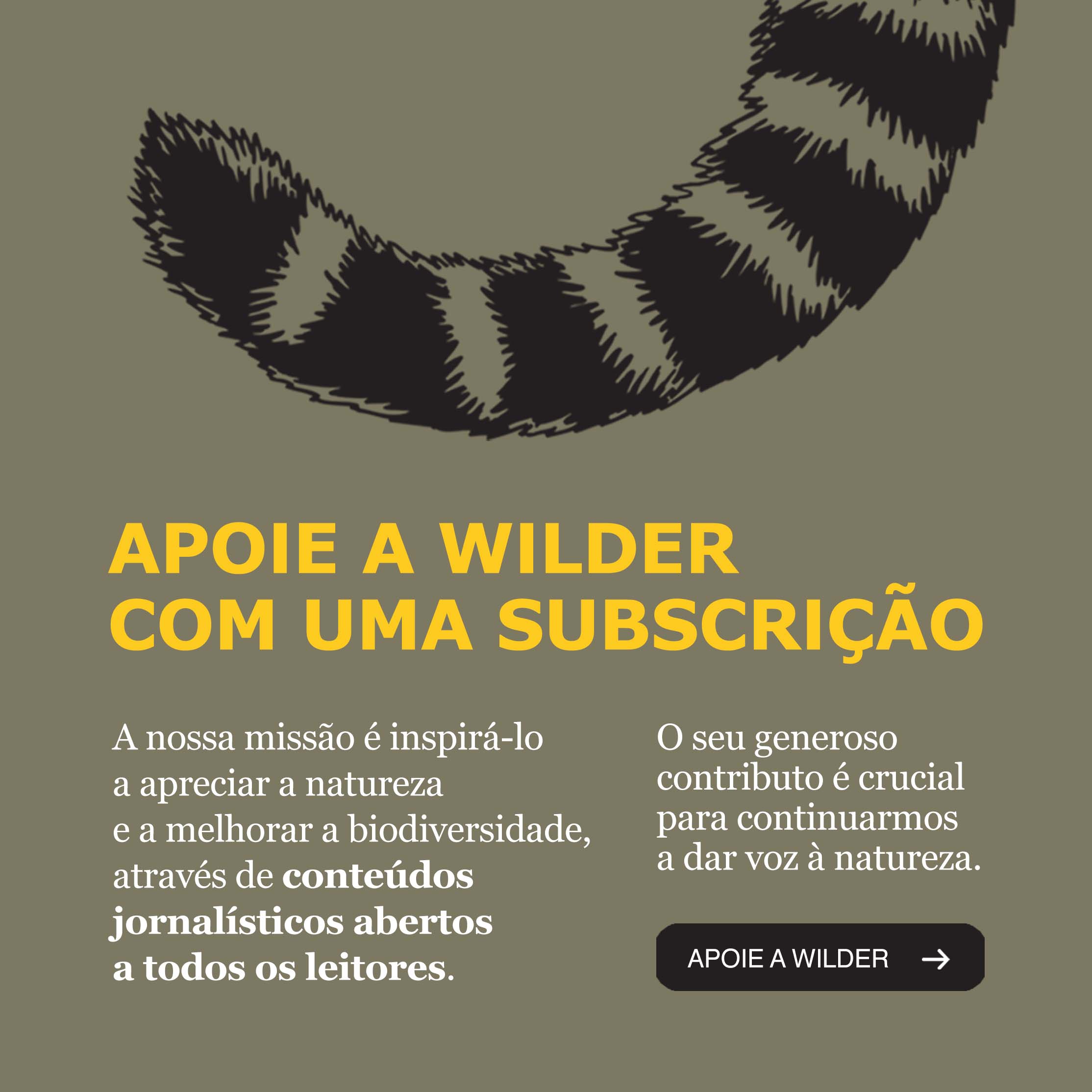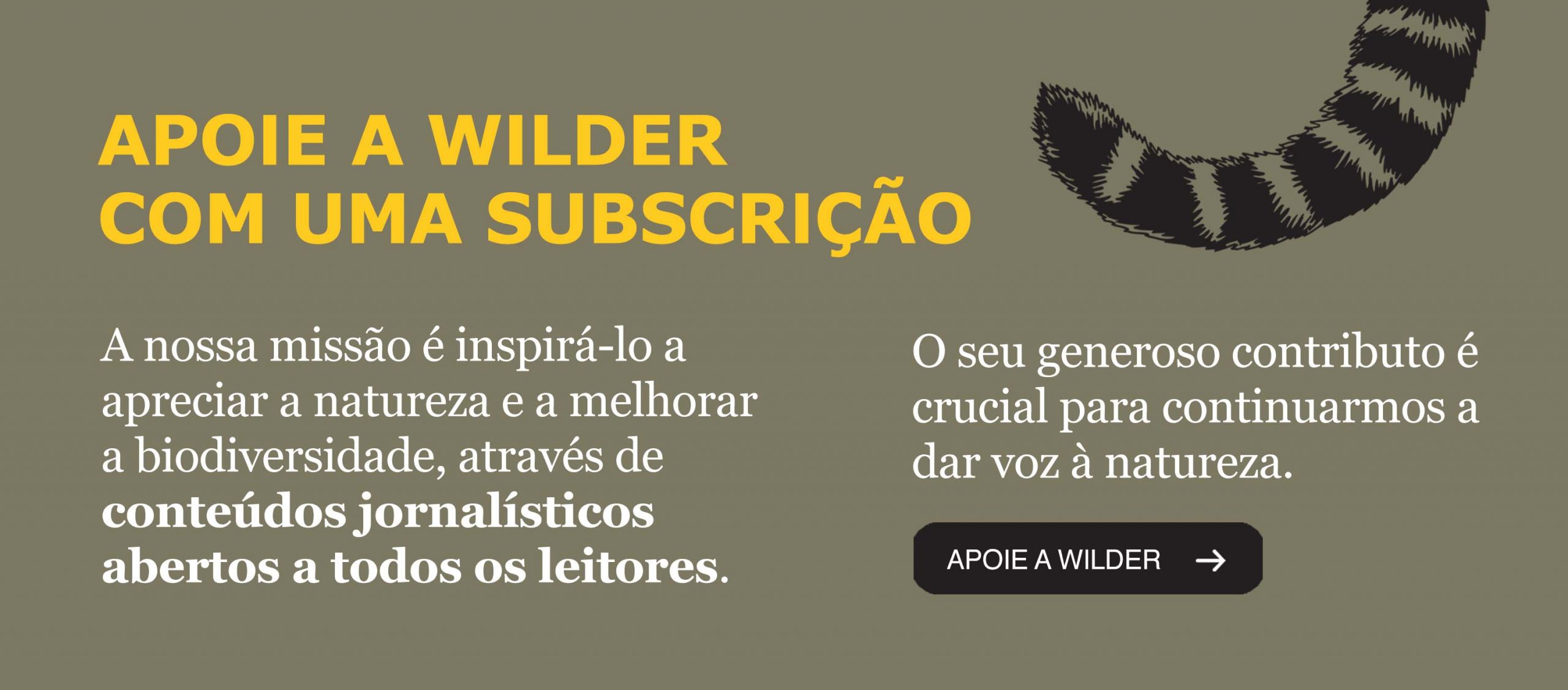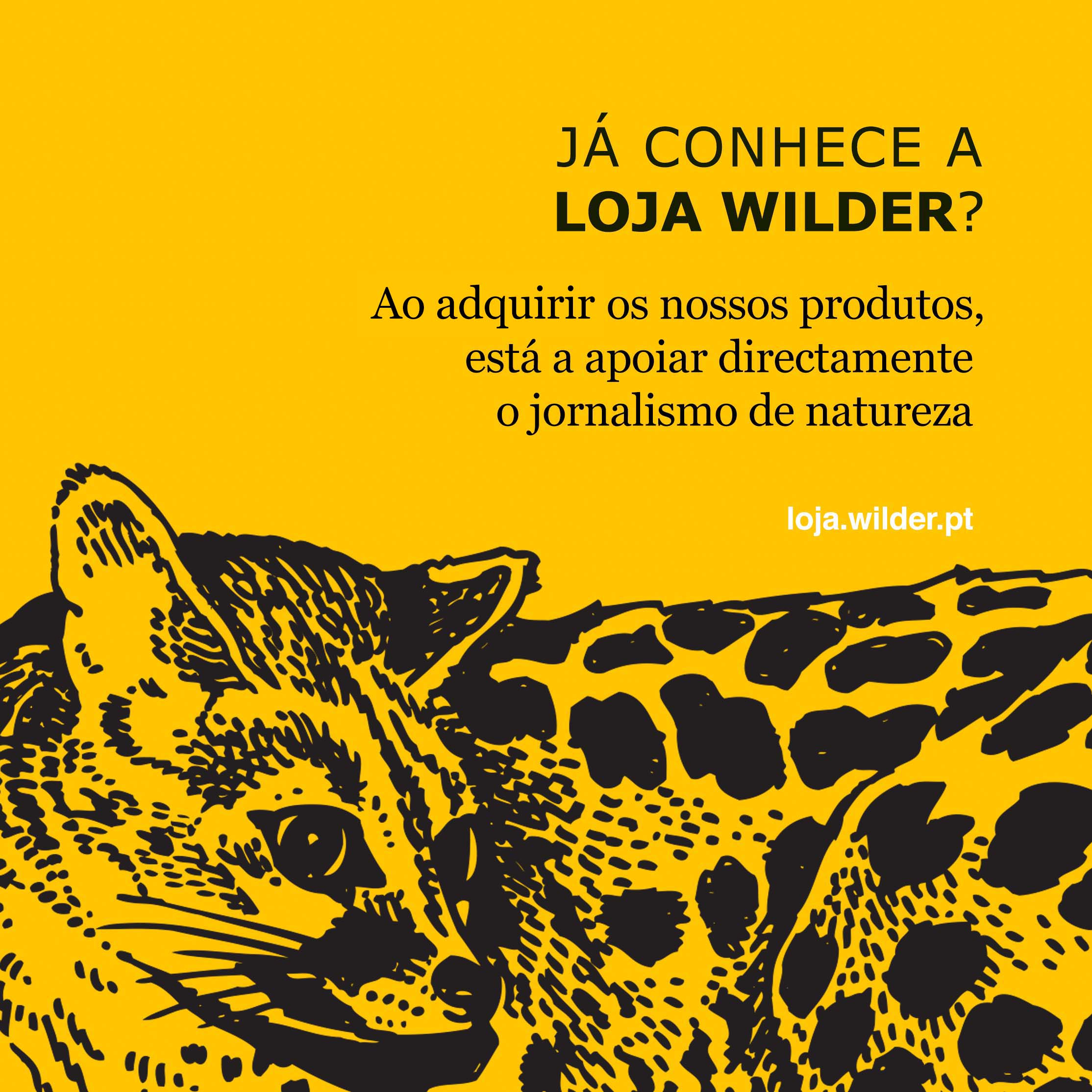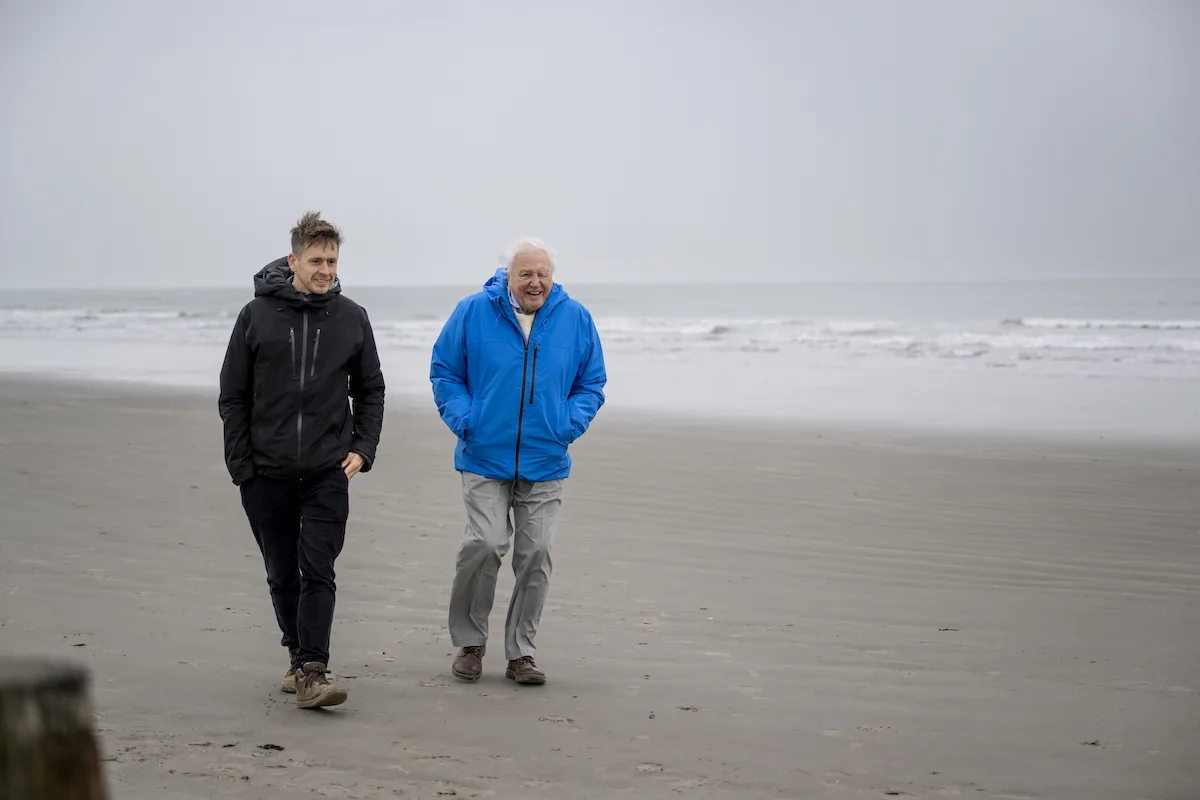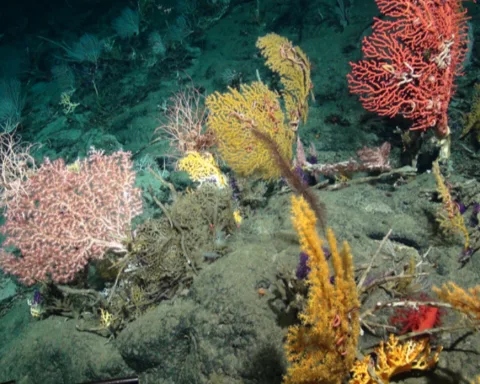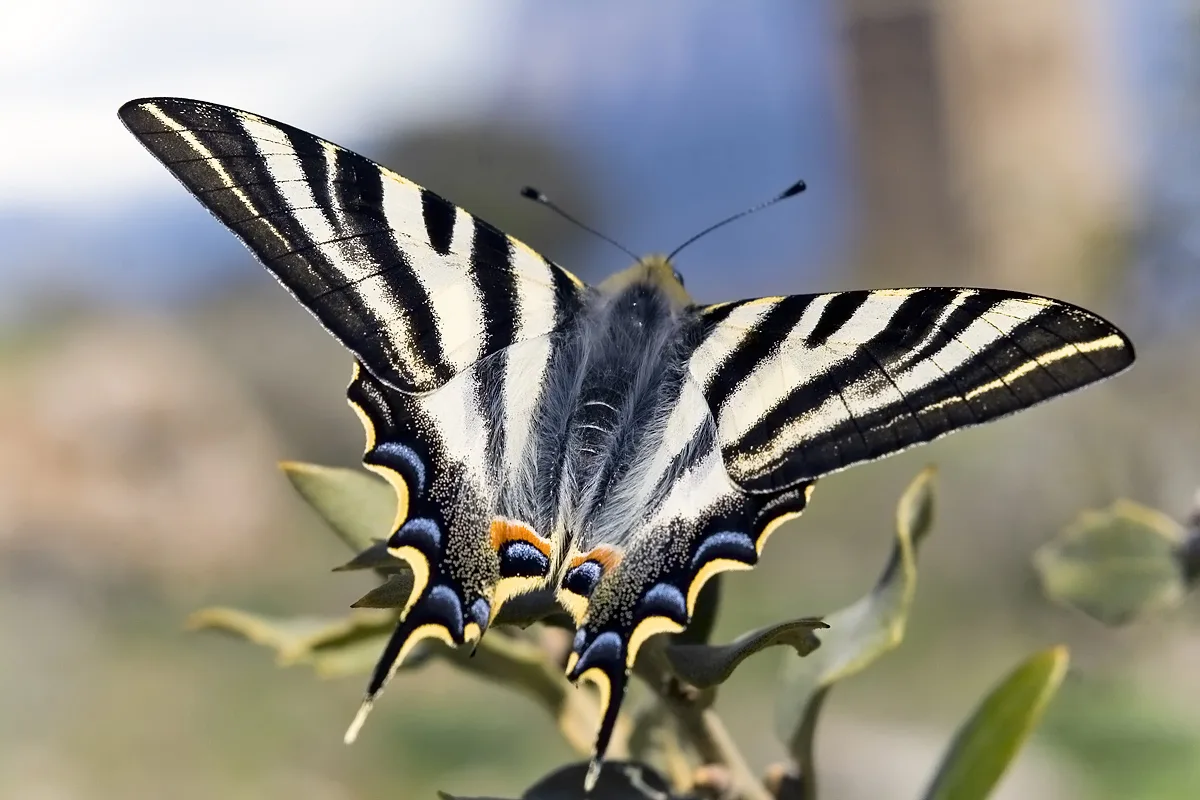“Ocean with David Attenborough”, launched this month in the United Kingdom, is a film that wants to influence governments to protect the ocean and to give a message of hope. Wilder interviewed Toby Nowlan, one of the directors, and Enric Sala, marine biologist and scientific advisor.
Enric Sala, 56, is a marine biologist with a lifelong passion for the ocean. One day he realized he was more focused on describing the death of the ocean than to come up with a cure. He decided to change and do something different. In 2008 he created the National Geographic Pristine Seas Initiative and, since then, has helped to create 29 protected marine areas all around the world.
This week, Wilder interviewed online Enric Sala, who joined the team to create “Ocean with David Attenborough”.
Next to Enric Sala in this online interview is Toby Nowlan, one of the directors and producer who works for Silverback Films. For the last 20 years, Toby helped to create several Natural History series, including Planet Earth II and Our Planet. He’s been working with David Attenborough for 16 years. But this film has changed the way he sees the ocean.
WILDER: You’ve said that this film is very different, it’s not about filming new Natural History behaviours but telling stories about problems and solutions. Is this a trend that will prevail and shape the future of wildlife documentary industry?
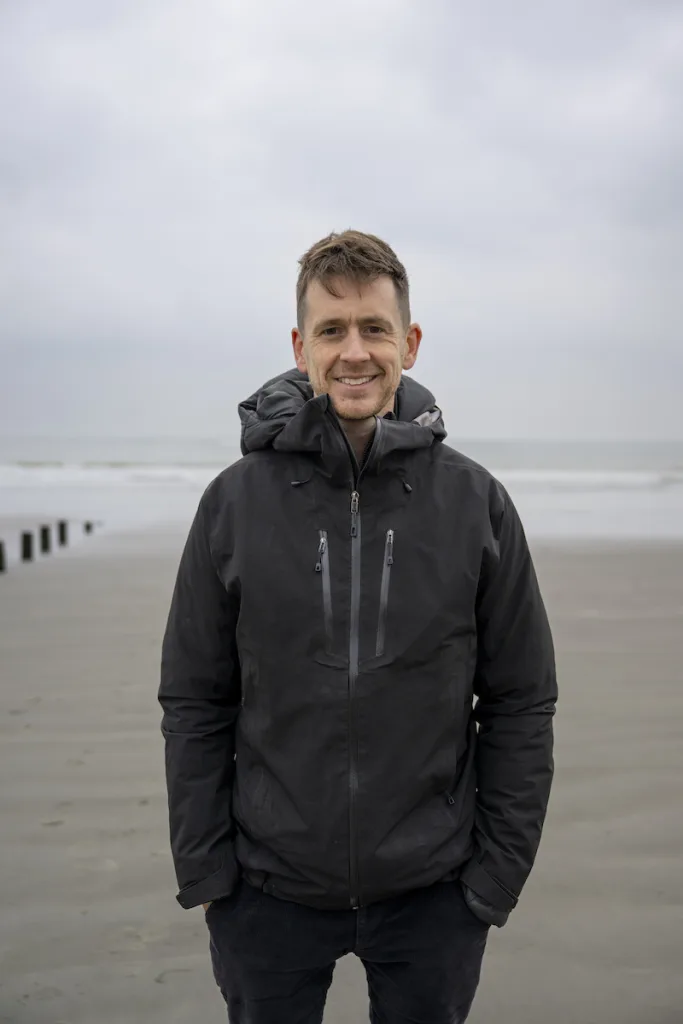
Toby Nowlan: This is the most important story David Attenborough has ever told. It’s not an episode of TV, it’s a cinematic event, produced for the big screen, filmed in the seas of the seven continents. Every single person who’s been part of this film wanted to create a moment in time where we can actually generate change and, perhaps, turn the tide and create something really special. In terms of problems and solutions, who knows whether this will be a new trend? I hope so and I think it should be, because I think our industry needs to change, the way we message needs to change. For me, the really exciting thing of the message in this film was that, ultimately, it’s the big take home of hope. And that feels really different, it was a real gift for this film. And it wasn’t until I started making the film, I realized just how capable the ocean is, the spectacular recovery. You know, you protect an area of the ocean and the effects are much quicker, much bigger and much easier than on land. And that life floods out to surrounding areas of ocean, in a really spectacular way. And that process, once I was aware of it, it was so, so exciting. So, I think because we had a gift of that wonderful, huge, global solution, it was clear that the narrative of this film was not to be around specific new natural history behaviors. This film is more urgent and, frankly, bigger than that.
W: Is the message powerful enough to influence the outcome of Nice’s United Nation Ocean Conference in June?
Enric Sala: Ah, ah (laughs). I think the message is powerful enough. It’s very clear that protecting no-take areas is benefiting everybody, including the fishing lobby that opposes them in the first place. And we’ve known for a long time that protecting the right 30% of the ocean will benefit us, marine life, fishing, create jobs, boost coastal economies, produce a climate resilience, etc. But, as Toby said, we’ve planned to use the film as the most powerful tool to show decision makers why protection is good for everybody. We had the science, we had the economics, all the stuff for the brain, we got it covered. But what the film does is it speaks to the heart. We are using it to try to influence some commitments by the UN Ocean Conference. We are already having discussions with governments about committing to ban bottom trawling in marine protected areas.
W: Greece has announced banning bottom trawling by 2030…
Enric Sala: Yes, Sweden also committed to that and Denmark made a similar commitment this year. We are working with several European governments and we hope that there will be other governments that will do the right thing, the smart thing, and commit to fase out bottom trawling in marine protected areas. Because it benefits nobody, not even the fishing industry.
W: What has been the audience feedback so far?
Toby Nowlan: It has been excepcional so far. We’ve been absolutely over the moon. It’s been breaking box office records in the UK Islands, Australia and New Zealand. It had some wonderful reviews, we’ve been very lucky, five stars in The Guardian, which is a hard one to get (laughs). But actually, interestingly online, the social media outpouring has been really, really fascinating. There was a 90 second clip on the bottom trawling sequence, it was released a week ago, and it since has millions of views online. And it seems to be really resonating with people. This is a process that has sparked really outrage; it has been brought out in the UK Parliament twice now and MPs have been approached. I had reports from Iceland and Jersey of conversations about marine protection being instigated as a result of this film and screening. The effects on the ground are starting to take hold, it’s really exciting.
W: What was the most difficult thing for you to witness during the filming of this documentary and what gave you the most hope?
Toby Nowlan: Wonderful. Ok. The most difficult thing to film or to witness?
W: Both!
Toby Nowlan: Well, I think the most difficult thing to film was, probably, out in the open ocean, in the middle of the Atlantic, when we were filming for the seamount sequence in the first chapter of the film. Often when you film out in the open ocean weeks can go by, when you see very, very little. You are in this huge expand of open blue and in challenging conditions and then, everything happens.
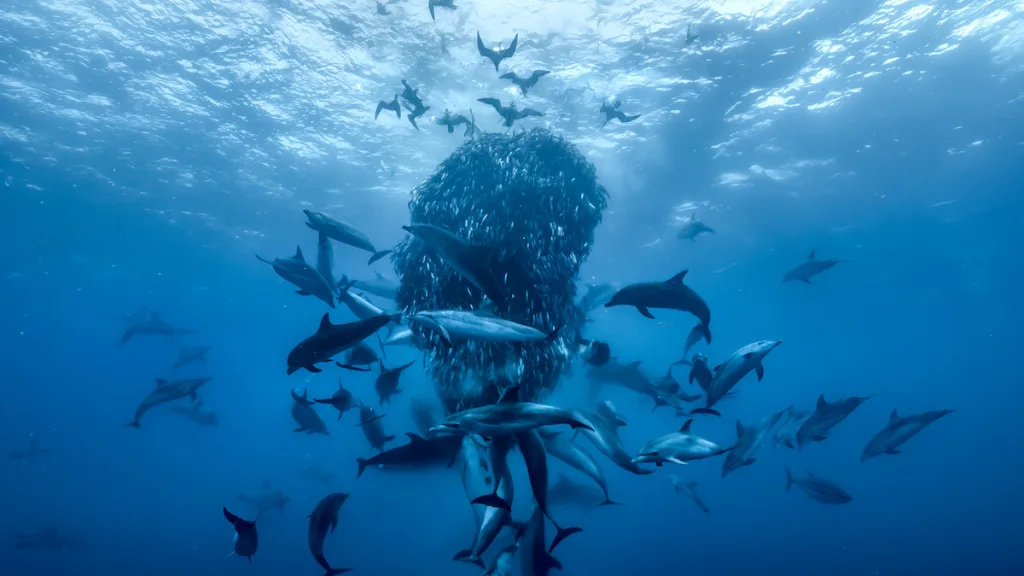
Suddenly it could all be over within a few minutes and you need to respond extremely quickly. And the situation of what’s happening can be different each time. So, as an example, out in the Atlantic, you might see distant cloud of Cory Shearwaters spiraling around like a little vortex on the horizon. If you get there in time you might find yourself lucky enough to be in the midst of these giant blue fin tuna the size of small cars, three times bigger than the dolphins feeding around them, just whirling into this big ball of deep sea mackerel coming up from the seamount and the blue sharks coming in and bumping in the back of your head – very curious, friendly sharks – and giant sei whales and minke whales cruising right past you. But every single time is different and you need to respond very, very differently. Do you launch the small boat? Do you get the drones in the air to get the action from the air? Do you jump in the water with safety divers? So there’s a lot of different conditions you’re juggling with. In terms of what had the most impact for me it wasn’t until I saw the footage of bottom trawling and the actual demolition of the seabed clearly on the screen for the first time. I really realized just how violent this process is. No one can believe it without seeing it. I think this is why something like bottom trawling has remained unchanged and unchecked for so long. People just have not seen it. And then in terms of hope, there’s one place that really struck me. I love my birds, I’m absolutely sort of obsessed, obsessive birdwatcher. So it doesn’t get more exciting than albatrosses. The biggest flying bird on the planet and the longest living bird on Earth is the Laysan Albatroz and we were filming in this espectacular place called Papahānaumokuākea Marine National Monument, in the tropical heart of the Pacific Ocean.
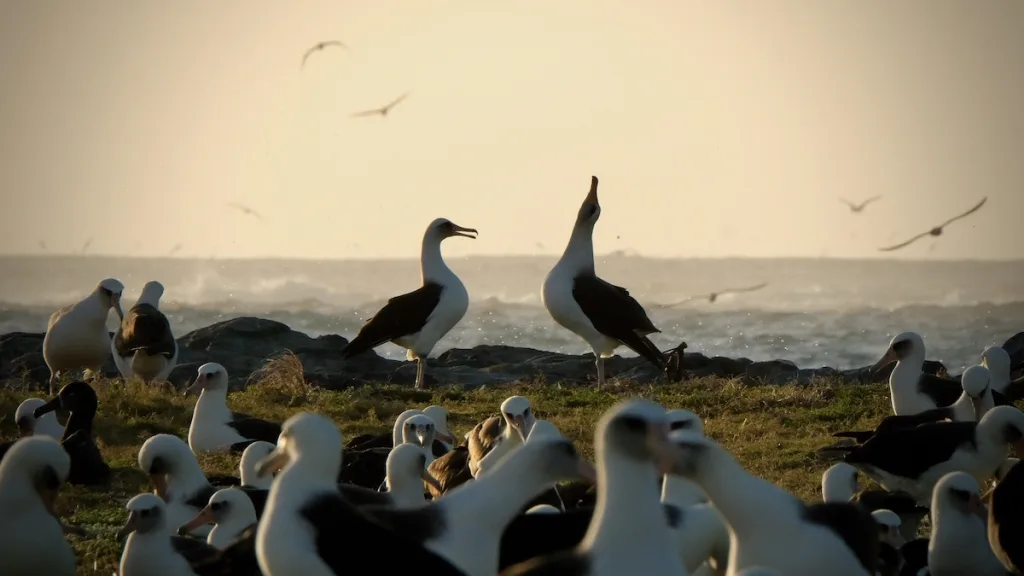
And this is a place that has showed the most espectacular recovery as a result of its strict protection; these albatrosses went from near extinction to one of the largest albatrosses colony on Earth. And those effects are very much on the water as well. So in terms of protecting a huge slice of ocean the effects are absolutely spectacular and that just fills me with hope.
W: Bottom trawling is just one of ocean’s problems. There are others, such as the warming and acidification of the ocean. Can we solve those problems with marine reserves or are they too big for us to deal with?
Enric Sala: There’s not a solution that fixes everything. Many problems, many solutions. I think the three main problems with the ocean are global warming, which makes the ocean warmer and more acidic, overfishing and then pollution. Of course, plastic pollution is horrible but there are many pollutants we can not see and that are also an issue. Global warming, the only way to reduce it is to reduce our carbon emissions. Period. We need to reduce our carbon emissions, then we need nature to help us. Because protected land and ocean can help us absorve a third of our carbon emissions. So, for example, and you see that in the film, fish do their job and they help corals to come back.
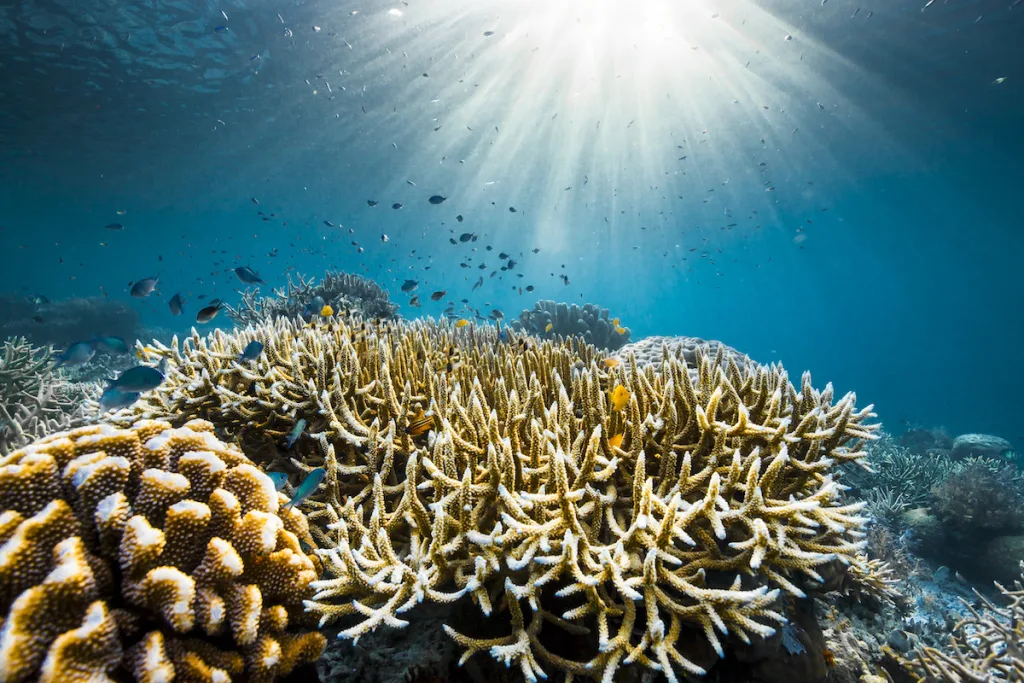
So what protection does is to buy us time while we, hopefully, go to carbon neutrality. So, it’s two sides of the coin. We can not solve the global warming issue without nature and we can not save nature without fixing global warming.
W: With so much going on in the world, and people’s attention on other matters, do you think we are living in a weakened moment for the oceans?
Enric Sala: The oceans never have been under such pressure. Ever. But nature is always the last priority, right? Because we humans are very good at ignoring it. Everything that we think is important, like the financial markets or the economy, are all based on our ability to live on planet Earth. And the only reason we can live on this planet is because of the natural world, both land and sea. The ocean has absorbed so many of our impacts; our lives would be really, really horrible without the ocean. It absorbed 90% of the heat that has been created since the start of the Industrial Revolution; absorbed a third of our carbon emissions. We are already suffering the impacts of global warming; without the ocean, Earth would be like Venus, there would be no life on Earth. So there is this disconnect between our life support system and everything else. But at the same time we have nations that have already protected 30% of their waters or more, namely Seychelles, Colombia, Chile, Costa Rica, Palau. It’s extraordinary that these nations had the wisdom to do it.
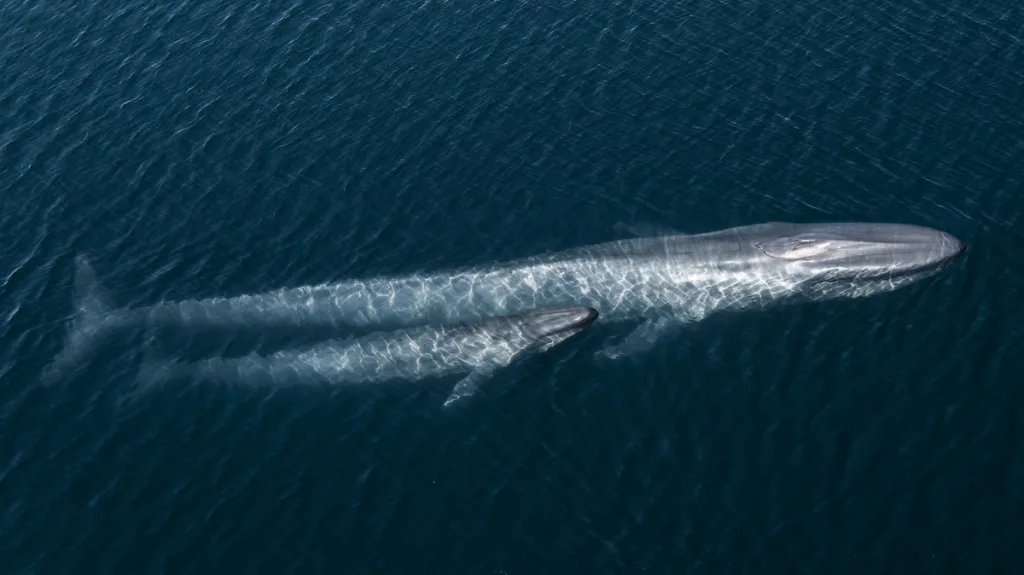
So, the world may not believe we live in a climate crisis but we are; we never had this global crisis, this global emergency. The warming of the planet is not something we can just turn off tomorrow. This is why this film is more important than ever, this is why Attenborough’s message is more important than ever and this is why we should work as hard as possible to bring back the health of our ocean. Because all of our lives and everything we care about depends on it.
W: In this era of social media and overload of information, do you find it more difficult or easier to reach out young people and capture their attention?
Toby Nowlan: That’s a really interesting question. I think we have to adapt, we have to make sure that our content is reaching younger audiences as they are such crucial audiences to reach, they are the pioneers to change the world. We’ve made a cinematic 90 minute feature film hoping that as many people as possible will see it on the big screen and on TV. But in terms of shorter content reaching lots of people, we just have to make sure this content also goes out on social media. So, we’ve been trying to adjust to that strategy. That’s why we’ve been releasing some short clips. There’s a 90 second trawling clip that has reached tens of millions of people online and is having an effect in a big way. We need to make sure that our hopeful messages reach big social media platforms, not just the bad stuff, but the good stuff too.
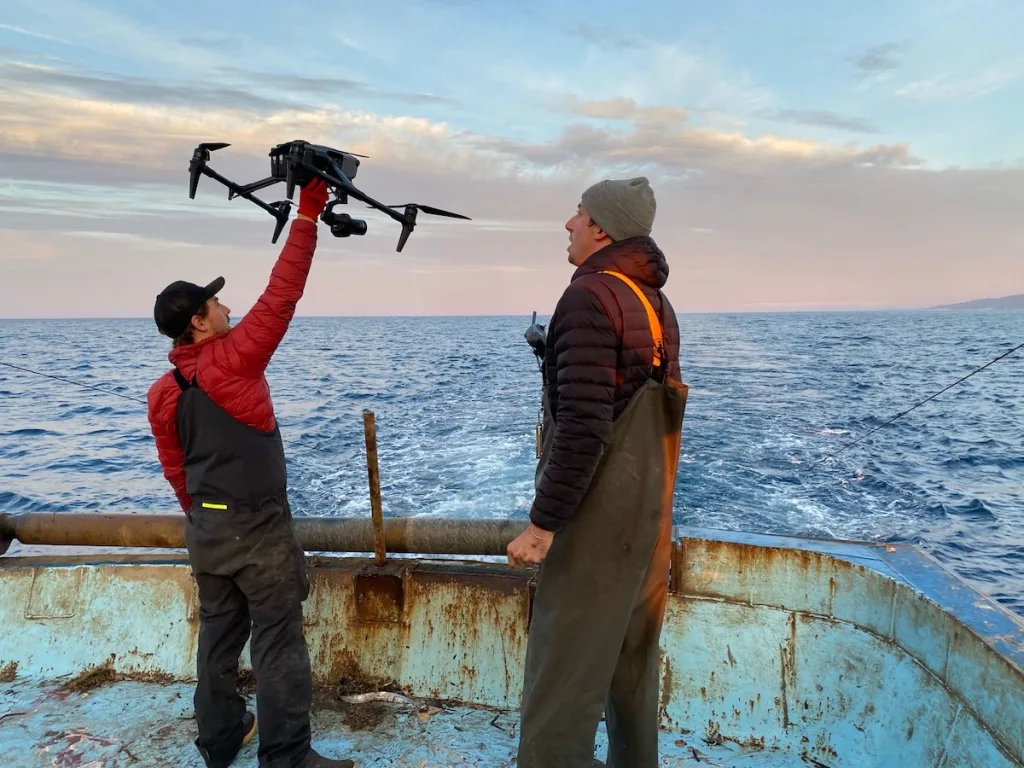
W: I have to ask. How were you able to capture those bottom trawling footage?
Toby Nowlan: Great last question (laughs). Yes, it was technically very difficult to capture the footage. We’ve overcome a lot of technical challenges to manage that. We had the challenge of low light, filming at depth, filming with fast moving waters, with a lot of movement. And, of course, there’s the violence of the process. We have lost a few cameras. So, very, very difficult. We’ve spent a lot of time developing these equipments to get these images we gave you guys. There was a lot of conversation, a lot of collaboration with leading people in the industry to get those never seen before images.
W: Was it a collaboration with the fishing vessel?
Toby Nowlan: It was a collaboration with Marine Biological Association who is running a scientific study to measure the effects of scallop dredging, namely the precise amount of seabed affected by the dredging process, by using the cameras. So the cameras actually helped scientists to collect data. There will be very important data coming out later this year in a paper for conservation and fisheries.

